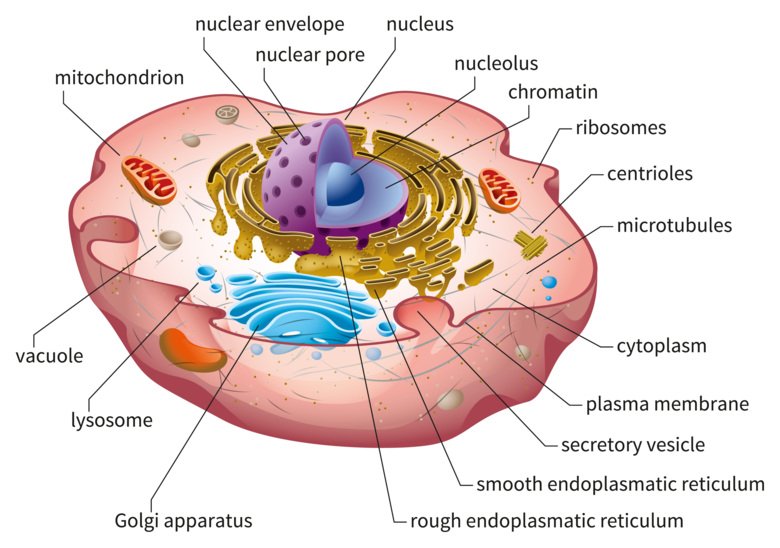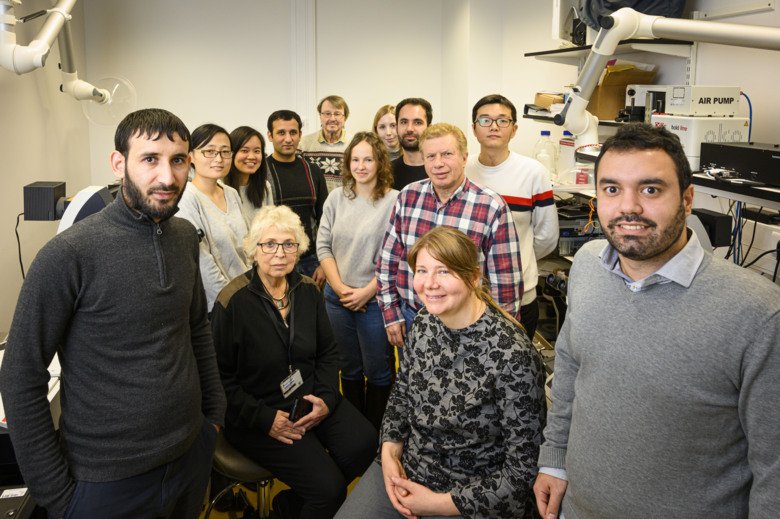New principle for activation of cancer genes discovered

Researchers have long known that some genes can cause cancer when overactive, but exactly what happens inside the cell nucleus when the cancer grows has so far remained enigmatic. Now, researchers at Karolinska Institutet in Sweden have found a new mechanism that renders one canonical driver of cancer overactive. The findings, published in Nature Genetics, create conditions for brand new strategies to fight cancer.
One gene that is called MYC is central for normal cell growth. However, if the gene mutates and/or becomes overactive, it could lead to abnormal cell growth and cancer. It is previously known that so-called super-enhancers, large regions in the DNA that develop near cancer genes, could somehow make the MYC gene overactive.

The current study increases our understanding of how this process takes place by highlighting how environmental cues can conspire with the architecture of the cell nucleus to cause overexpression. With the help of new laboratory techniques and computer models, the researchers show how the activation of the pathway of the signal-molecule WNT charges the super-enhancer with proteins that lures the MYC gene to the cell nucleus pores. The pores are situated on the membrane of the cell nucleus and control the flow of information between the cell nucleus and the cytoplasm.
WNT + super-enhancer = MYC at nucleus pores
When the MYC gene is anchored to the nucleus pores and copied into so-called messenger RNA (mRNA), it significantly increases the likelihood that its mRNA is exported from the cell nucleus to the cytoplasm. mRNA works as a template for the formation of the MYC protein that controls the cell’s ability to grow. Since MYC mRNA doesn’t break down quite as effective in the cytoplasm as in the cell nucleus, this mechanism gradually leads to abnormally high levels of the MYC protein and thereby uncontrolled cancer growth.
By using pharmaceuticals that knocked out WNT-signaling, the research team was able to prevent the super-enhancer from transporting and anchoring the MYC gene to the nuclear pores. This resulted in normal levels of the MYC protein in the cytoplasm without affecting the rate of mRNA formation in the nucleus.
New perspective

“Our results offer a completely new perspective on how cancer genes may become overactive,” says Anita Göndör, researcher at the Department of Oncology-Pathology at Karolinska Institutet who led the study together with Rolf Ohlsson at the same department. “Since the principle is specific for cancer cells, this opens the possibility of new targeted drugs that do not harm normal cells.”
The next step will be to identify new drugs that interrupts different parts of the process. The researchers hope the findings could open up for a new generation of cancer treatments that are less harmful than for example radiation and chemotherapy, which knock out many normally growing cells and have negative side-effects.
“The strength of our study is the identification of a previously unknown process that increases the possibility of finding combinatorial drug treatments and thereby pave the way for a significantly more effective therapy of cancer patients,” says Rolf Ohlsson.
The study has been financed with grants from the Swedish Research Council, the Swedish Childhood Cancer Fund, the Marie Sklodowska-Curie Actions, the Åke Wiberg Foundation, the Swedish Cancer Society, the Lundberg Foundation, Karolinska Institutet, the Novo Nordisk Foundation, the Cancer Society in Stockholm, the China Scholarship Council and the Knut and Alice Wallenberg Foundation.
Publication
”WNT signaling and AHCTF1 promote ongogenic MYC expression through super-enhancer-mediated gene gating,” Barbara A Scholz, Noriyuki Sumida, Carolina Diettrich Mallet de Lima, Ilyas Chachoua, Mirco Martino, Ilias Tzelepis, Andrej Nikoshkov, Honglei Zhao, Rashid Mehmood, Emmanouil G Sifakis, Deeksha Bhartiya, Anita Göndör* and Rolf Ohlsson*, Nature Genetics, 29 november, 2019, doi: 10.1038/s41588-019-0535-3
